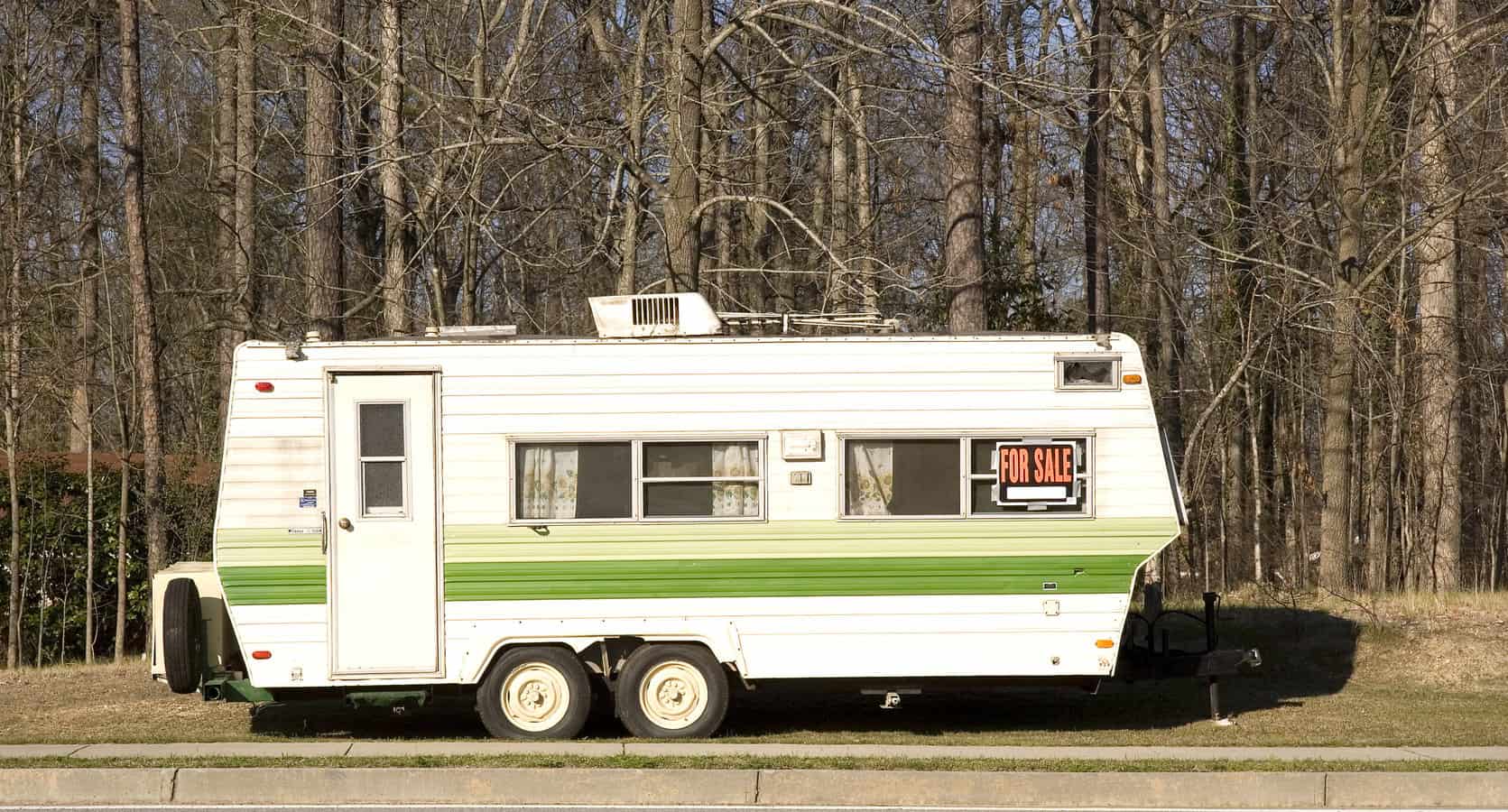Anyone searching for an RV questions themselves as to which one best suits their needs. To fifth wheel or not to fifth wheel, that is the question. It’s a dilemma, for sure, and requires due diligence and patience.
Fifth wheels vary widely in weight. From the lightest at 2,400 pounds to the heavyweight champ of 20,000 pounds, choosing one requires attention to detail. Most weigh between 7,000 and 20,000 pounds with the average weight being between 12,000 and 15,000 pounds. Let’s discuss types of fifth wheels and some specific examples of weight.
Lightweight / Ultra Lite Fifth Wheels
These fivers have gained popularity for many reasons. The price of diesel or gasoline for the tow vehicle is a big factor. Save on fuel, and you get to spend those savings on traveling further or spending more days at a campsite of your choice. It’s a no-brainer. Lightweights can also offer great quality and a variety of floor plans.
Those with children or retirees hitting the road, realize that sometimes small really is better. Tiny homes are now cool; why not lightweight fifth wheels, which all-in-all are not tiny in many people’s perspective.
The lightest of light is the Scamp 19’ Deluxe (2,400 – 2,900 lbs.) It’s compact and even has a wet bath, but no slides. The Escape, manufactured in Canada, is another lightweight model, comparable to the Scamp.
Many RV manufacturers make lightweight models, however, the majority of those will range from 7,000 to 9,500 pounds, with lengths of 21’ – 34’.
- Forest River Arctic Wolf 265DBH8 – 8,284 lbs., 31.9 ft.
- Jayco Eagle HT 24.5CKTS – 7,530 lbs., 29.5 ft.
- Grand Design Reflection 150 Series 290BH – 8,294 lbs., 34.0 ft.
- Escape 5.OTA – 3,885 lbs., 21.2 ft.
Before we continue talking about fifth wheel weights and towing, we wrote where we list the best trucks to use to pull a fifth wheel. Find the article here.
Mid-Profile Fifth Wheels
Weights of mid-profile fifth wheels will be 10,000 to 14,000 pounds with a length of 33’ to 41’. In choosing a mid-profile over a lightweight, the decision can be a matter of lifestyle needs, upgrades and floor plan.
These fifth wheels may have more slides, Corian countertops, residential-sized refrigerators, upgraded furniture, crown molding, computer work stations, generous bunk rooms, king-sized bed, larger black/gray/fresh water tanks which, in the end, will add to a longer length and more weight than their lightweight cousin.
- Keystone Montana 3720RL – 13,329 lbs., 39.7 ft.
- Heartland Pioneer – 11,010 lbs., 39.8 ft.
- Grand Design Reflection 337RLS – 10,570 lbs., 35.6 ft.
- Highland Ridge Mesa Ridge MF374BHS, 12,300 lbs., 40.6 ft.
Luxury Fifth Wheels
RVers will take glamping seriously with these luxury models. You can travel in style, turning heads along the way. They’re perfect for the full-time RVer who wants quality construction, comfort and high-end features.
These models range weight-wise a bit higher than mid-profiles, with the low-end at 11,000 pounds to the heftiest coming in at almost 20,000 pounds. Lengths run from 35’ to 45’.
Luxury models offer a home on wheels with the option to customize your floor plan. You’ll enjoy the comfort and convenience of innovative technology, superb craftsmanship, full-sized appliances, top-of-the-line entertainment system, higher ceilings, washer/dryer, upgraded insulation and a large master bedroom and bath.
- Redwood RW390 / 3901MB – 14,510 lbs., 40.2 ft.
- KZ Durango Gold G385FLF – 12,860 lbs., 42.4 ft.
- Jayco Pinnacle 38REFS – 13,685 lbs., 42.8 ft.
- DVR Luxury Suite 44 Memphis – 19,800 lbs., 44.2 ft.
Toy Hauler Fifth Wheels
For many campers, bringing their “toys” along is half the fun. Well, there’s a fifth wheel just for you. Toy haulers are in a class of their own. Ranging 10,000 to 16,500 pounds, the lengths run 33’ to 45’ which includes a garage to haul those toys around.
To enhance the outdoor experience, motorcycles, dirt bikes, ATVs or golf carts can add to your fun. Some may want space for kayaks, canoes, bicycles or children’s toys. Toy haulers have a ramp door off the back making it a breeze to load whatever you wish to haul.
The garage area can also be used as extra versatile space for family, such as sleeping space, a dinette, an extra bath or even serve as an open patio for gatherings. You may wish to turn your garage into an entertainment room complete with TV, stereo and speakers once the toys have made their way to your campsite.
- Dutchman Voltage 3305 – 13,240 lbs., 39.2 ft.
- Heartland Cyclone 4200 – 15,725 lbs., 44.0 ft.
- Keystone Carbon 337 – 11,710 lbs., 35.11 ft.
- Palomino Puma 384FQS – 10,581 lbs., 39 ft.
Here, you can find an article we wrote where we list the most popular toy hauler fifth wheels on the market. We include a detailed description of each one, along with its weight.
Size limitations
This is a tough one and worth your while to check state requirements on combined lengths of the fifth wheel and truck. The majority of states allow a combined length of 65’. A few states allow longer combined lengths; others have a smaller limitation on combined lengths. Play it safe. Check these numbers prior to deciding on the fifth wheel of your dreams.
Size limitation also holds true when camping in national or state parks. It is recommended to check RV lengths allowed for campsites prior to making reservations.
While towing, safety is always of utmost concern
Passengers are not allowed to travel in a fifth wheel while in tow in most of the U.S. However, there are approximately 16 states that do allow it. Check your travel route to ensure you know state laws.
Driving at moderate speeds while towing is your best bet for keeping control of your vehicle and saving fuel all at the same time. Allow a safe distance between you and the vehicle in front of you when coming to a stop. When making turns, account for a wider turn radius to avoid hitting curbs or anything else that may be in your way.
Most states will require a fifth wheel be fitted with safety chains. Additionally, a separate braking system will need to be installed if the truck is not equipped with one.
In order to tow your fifth wheel safely, check your truck’s tow rating and hitch weight to ensure it can handle the load placed on the truck’s suspension. You never want to experience the RV overpowering your truck. The total towing capacity will include the unloaded weight of the RV, the cargo being carried in it and the weight of passengers and cargo inside your tow vehicle.
This basic information will help when searching for that fifth wheel.
- UVW (Unloaded Vehicle Weight): Typical weight of RV when it is delivered from the manufacturer. It includes the unit’s axels, hitch weight and a full LP propane tank.
- CCC (Cargo Carrying Capacity): This designates the amount of weight available for fresh water, cargo, accessories and optional equipment.
- GAWR (Gross Axel Weight Rating): This maximum weight includes all cargo that can be safely supported by the unit’s axels.
- GVRW (Gross Vehicle Weight Ratio): This weight includes the hitch weight plus total weight of the vehicle’s carrying capacity, including passengers, pets and cargo in the vehicle.
In this article that we wrote, you can find a list of 9 tips for towing a fifth wheel trailer successfully.
Which hitch is most suited for your fifth wheel?
Choice in hitches commonly used are the standard hitch, the slider hitch or the gooseneck hitch.
The slider hitch is often used in short-bed trucks where the front of the RV could potentially come in contact with the rear cab when making an extremely sharp turn backwards or forward. You’ll navigate the hitch to the slide position when making this type turn.
The standard hitch can be used in full-sized or long bed trucks.
Horse-style trailers or heavy utility trailers often use the gooseneck hitch. If you need cargo in the bed of your truck, the gooseneck hitch can provide that option. It can be used for fifth wheels, but it’s recommended you check with the RV manufacturer to ensure approval of this style hitch. Some manufacturers will not warrant damages to your fifth wheel if a gooseneck hitch is used.
Because of the location of the hitch, many RVers believe the ride is more stable than a conventional bumper hitch used for travel trailers. Many people have asked the question of whether or not fifth wheel hitches are removable. In this article, we answer that question as well as give a guide on how to install a hitch on your fifth wheel successfully.
Check driving rules for states you’ll visit
The Rand McNally Motor Carriers’ Road Atlas was written for big rig drivers, however, many RVers have found it useful in knowing the lay of the land. It provides informative maps and restrictions for bridges, tunnels and low clearances.
When carrying propane tanks on board, stay away from tunnels in Maryland and Massachusetts. Trucks towing an RV must drive in the right-hand lane in several states, while some states prohibit a right turn on a red light. Know the rules.
Fifth wheels provide a whole new way of life on the road
Fifth wheels have many pros for part-time or full-time RVers. They have a more spacious feel than any other RV and provide more storage space, inside and out, than a travel trailer. The RV can be detached from your truck upon reaching your destination, leaving you a vehicle for exploring or, when the need arises, a quick trip to the grocery store.
You’ll find all the comforts of home in a fifth wheel whether you love a tiny home feel or prefer living large. Take your time and have some fun along the way checking out the great models that fifth wheel living has to offer.
[author title=”About the Author” style=”font-family:lato;”]






I have a Holiday rambler that is a 1 bedroom immaculate inside But I was out of state for months I am getting it detailed So the outside does not look the way it does , But I cannot find the Year model or any I do on it , I wanted to see if anyone knows of this model what year and tell me anything about it Because once it’s cleaned up I will be selling it please reply ASAP
Is a dulley best to handle a 20,000 pound 5th wheeler
Fifth wheels are not required to have chains in any state. With that being said have seen a lot that use Anderson hitches that do use chains because it is a ball connector not a pin and jaw system. Just look at the big semi’s because that what they are fifth wheels..